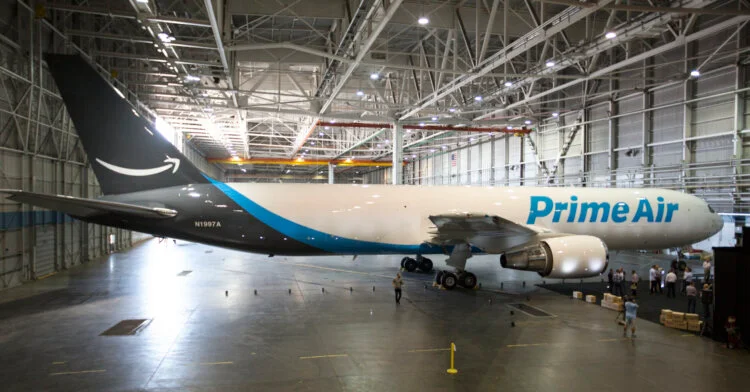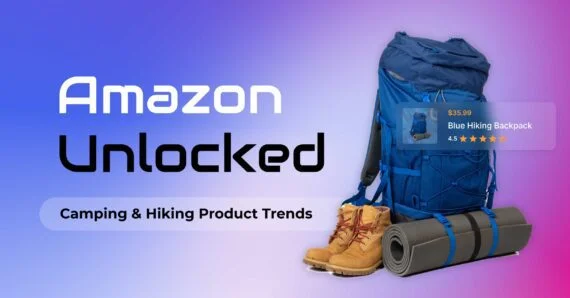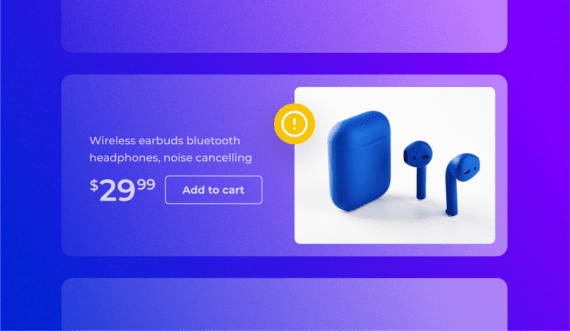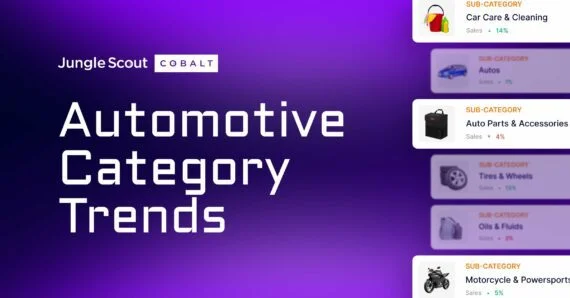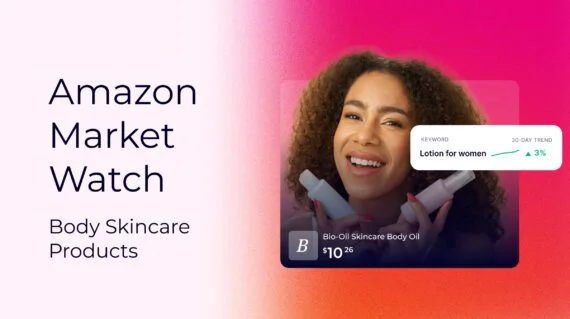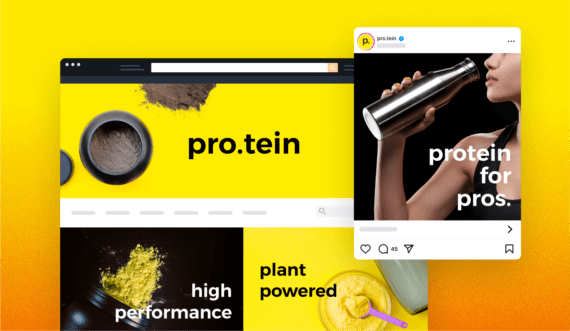Content
expand_moreThe Amazon Supply Chain is responsible for getting customer orders from point A to point B as quickly and efficiently as possible.
Between those two points is a lot of moving parts such as receiving inventory, sorting inventory, warehousing, product-picking robots, warehouse associates, truck drivers, Amazon Prime Air, delivery drivers, and so on.
On the customer side, all one needs to do is click a button, then two days later, their order magically appears on their doorstep.
As an Amazon FBA (Fulfillment by Amazon) third-party seller, you get to leverage Amazon’s state-of-the-art facilities and processes, giving your business the logistical efficiency that would be impossible to match on your own.
Here’s how the supply chain works:
- You (the Amazon seller) create a shipment in Seller Central specifying how many units or products will be shipped and the size and weight of your shipment, making sure each unit has a scannable barcode.
- An Amazon-partnered carrier or shipping company delivers your bulk product shipment to the Amazon fulfillment center(s) specified in your shipment information.
- Amazon associates unload and receive your shipment by scanning a unique barcode that connects each package to your seller account.
- The units are unloaded from your shipment and scanned individually by an associate to identify each one so it is properly added to your inventory. The product should have either a UPC barcode or an FNSKU, which are unique Amazon barcodes that identify your products.
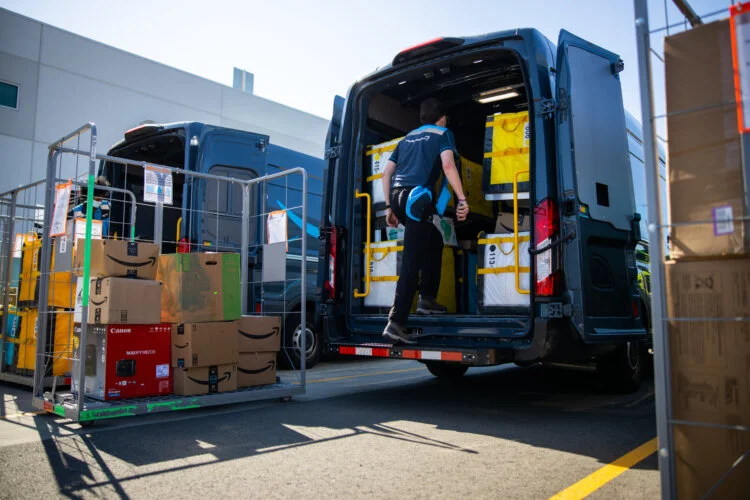
- Once received Amazon stores and/or distributes your units to other Amazon fulfillment centers.
- When a customer places an order for your product, Amazon robots and associates work together to accurately pick, package, and label the product.
- The product is then sorted and loaded onto a truck and/or plane to reach its delivery station where customer orders are prepared for last-mile delivery.
- One to two days later, the package is delivered to the customer’s doorstep.
To make all of this possible, Amazon’s fulfillment network consists of over a hundred buildings across the country for inventory management and processing millions of orders every single day.
According to Amazon’s facilities page, this is what the fulfillment network is comprised of:
Sortable fulfillment center
Around 800,000 square feet in size, sortable fulfillment centers can employ more than 1,500 full-time associates. In these buildings, Amazon employees pick, pack, and ship customer orders such as books, toys, and housewares. Thanks to the innovations of Amazon Robotics, associates often work alongside robots, allowing them to learn new skills and help create a more efficient process to meet customer demand.
Non-sortable fulfillment center
Ranging in size from 600,000 to 1 million square feet, non-sortable fulfillment centers employ more than 1,000 full-time associates. In these centers, associates pick, pack, and ship bulky or larger-sized customer items such as patio furniture, outdoor equipment, or rugs.
Sortation centers
At sortation centers, associates sort customer orders by final destination and consolidate them onto trucks for faster delivery. Amazon’s sort center network provides full- and part-time career opportunities and is powering our ability to provide customers with everyday delivery, including Sunday delivery, which customers love.
Receive centers
Amazon’s receive centers support customer fulfillment by taking in large orders of the types of inventory that we expect to quickly sell and allocating it to fulfillment centers within the network. Full- and part-time roles are available in these buildings, which are about 600,000 square feet in size.
Specialty
Amazon’s fulfillment network support includes additional types of buildings that handle specific categories of items or are pressed into service at peak times of the year such as the holiday season. Many of these buildings feature part-time opportunities with the option to convert to full-time.
Delivery stations
In these buildings, customer orders are prepared for last-mile delivery to customers. Amazon delivery providers enable our fast, everyday shipping.
How Amazon’s Supply Chain benefits Amazon sellers
The average small- or medium-sized online retailer doesn’t have the capacities or sophisticated logistical processes that Amazon has built. Amazon’s supply chain not only benefits them and their customers but also benefits the third-party sellers who sell their products on Amazon.
Amazon sellers have two options to fulfill their orders: FBM or FBA.
In FBM (Fulfilled by Merchant), the seller handles all order fulfillment including storing, packaging, and order shipment
While in FBA (Fulfilled by Amazon), sellers send their products to Amazon fulfillment centers and Amazon handles all storage and order fulfillment. On top of that, products become Prime eligible which allows sellers to have orders delivered to their customers within 1-2 days.
By using FBA, sellers get to use Amazon’s advanced fulfillment network to grow their business. Instead of worrying about where to store your products or how you’re going to package and ship orders, you can let Amazon handle it all.
Amazon fulfillment centers
Amazon has 110 fulfillment centers across the US and over 185 across the world to ensure no matter where customers are located, they receive their orders fast and on time.
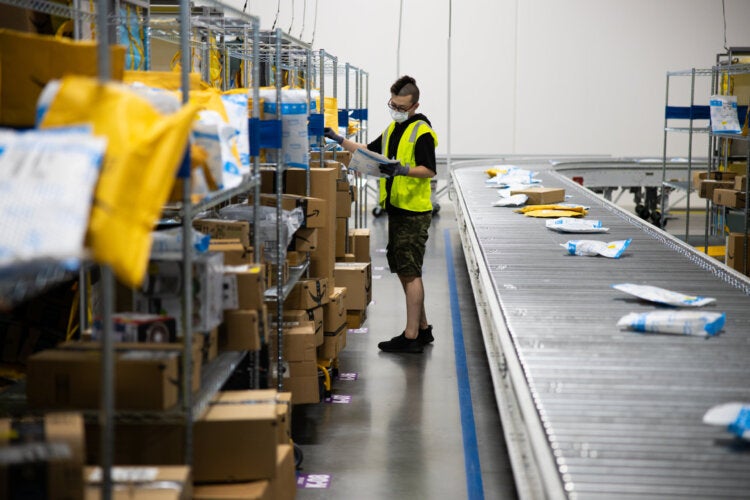
When sellers create a shipment in Seller Central, Amazon will tell them which warehouse or warehouses to send their inventory to. They base this on the demand for your type of product across the US. For example, Amazon may split your shipment between a New Jersey fulfillment center and a Texas fulfillment center.
Sellers do have the option to send all of their inventory to a single fulfillment center. Amazon will then distribute its inventory across multiple fulfillment centers to ensure sellers can meet the two-day Prime shipping promise in any region.
The fulfillment centers are where all the magic happens! Receiving, quality assurance, storing, packaging, and shipping all take place here.
Fun fact: Did you know that before COVID-19, you were able to tour an Amazon fulfillment center? While you can’t visit one again in person just yet, Amazon does offer virtual tours so you can get a glimpse of what their technology and people do for Amazon. It’s worth watching if you want to see where your products go and come from.
How Amazon customers receive their orders
Once one of your customers orders your product, Amazon quickly processes and ships the order — and you don’t have to do a thing.
When your products leave the fulfillment center, Amazon loads them into a tractor-trailer or an Amazon Air cargo plane to bring your package closer to its final destination. Once Amazon sorts out packages at the delivery station, they load them into one of Amazon’s delivery vehicles and deliver them to your customer.
It’s pretty incredible to think all of this happens within two days from when a customer placed their order. Next time you order something on Amazon or send inventory to a fulfillment center, think of all the hardworking employees that make these swift deliveries possible.
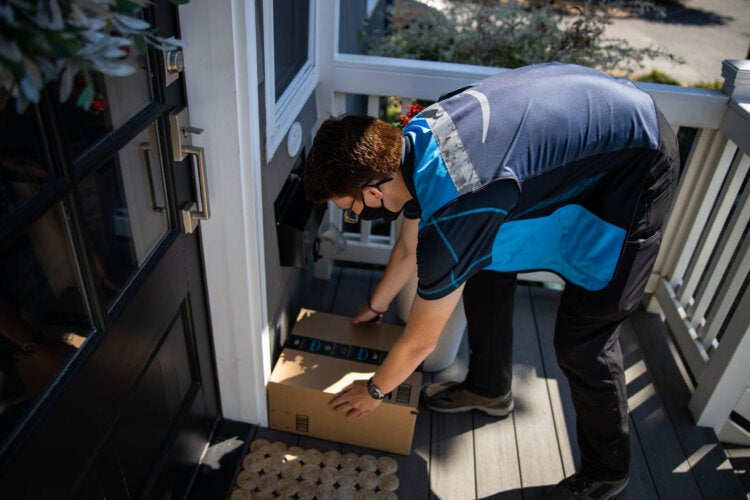
You know the Amazon delivery vans and trucks you’ve been seeing in your neighborhood? Many of their routes are actually owned and operated by independent contractors through the Amazon Delivery Service Partner program. Anyone can apply to become an Amazon delivery partner with as little as $10,000 and no logistics experience.
Use Jungle Scout to Navigate Amazon
As much as Amazon’s supply chain benefits all sellers, each seller should fortify their own operations on their end. To have a successful business on Amazon, you must be able to properly manage your inventory.
Without proper inventory management, you run the risk of understocking, causing a loss of sales or overstocking, resulting in costly monthly and long-term storage fees. Overstocking also causes issues with your storage limits in Amazon’s fulfillment centers, taking up the space you could use for faster-selling products.
With the right tools and strategies in place, you’ll know how to maintain the perfect balance of inventory needed for your business to run smoothly.
Using Jungle Scout’s Inventory Manager tool, you can accurately forecast demand, know when to replenish your inventory, and avoid costly storage fees.
Using this tool in conjunction with your Amazon metrics will allow you to run your FBA smoothly without the worry about overstocking inventory in Amazon’s fulfillment centers.
Use Amazon’s expertise to run your business
Amazon’s innovation won’t stop here. They will continue to invest in fulfillment centers, advanced technology, and talented people to exceed customer expectations and beat the competition in every aspect.
We hope this article gives you a better understanding of Amazon’s supply chain and how much actually goes into its operations.
If you have any more questions about Amazon’s supply chain and process, let us know in the comments below!
Brian Connolly is an Amazon seller, ecommerce expert, and writer for Jungle Scout. He lives in the New Jersey Shore area with his wife and cat. When he isn’t writing advice online for aspiring and experienced Amazon sellers for Jungle Scout, he spends his free time boating, fishing, and selling boating-themed items on his Amazon business.

